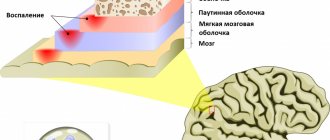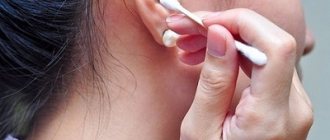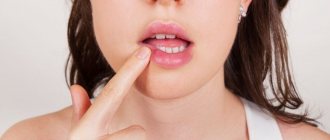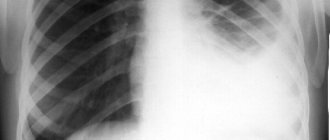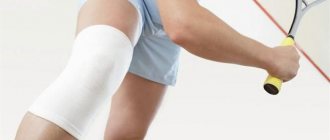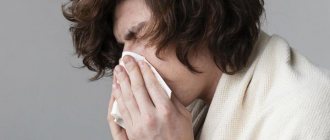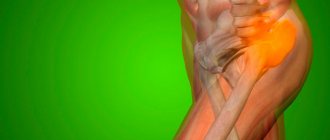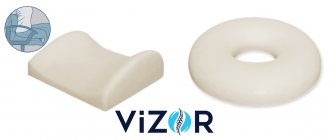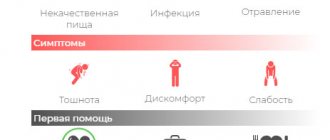Headache in the temple area bothers people of all ages. Some people experience headaches in the left temple or the right, while others suffer from pain in both temples. At the Yusupov Hospital, doctors first use a comprehensive examination to determine the cause of the headache in the temple. Treatment is prescribed depending on the type of pain.
Neurologists, therapists, and oncologists collectively establish a diagnosis and develop patient management tactics. Professors and doctors of the highest category use innovative methods of headache therapy. The medical staff is attentive to the wishes of patients. Psychotherapists provide support to patients with unstable emotional states.
The main causes of pain in the temples
Headache in the right or left temple can be caused by various reasons. It can have a pulsating, pressing character, and less often it can be cutting. A severe aching headache in the temple area often occurs in the morning, which forces the patient to wake up before the alarm clock.
Attacks of headaches in the temples come unexpectedly. If you have a headache in the temporal region, you should immediately contact a therapist at the Yusupov Hospital. He will conduct an initial examination and prescribe an examination. After receiving the research results, the therapist refers the patient to a neurologist, cardiologist or oncologist. If necessary, patients undergo a complex examination and receive consultations from leading specialists from partner clinics.
The most common cause of frequent headaches in the temples is considered to be pressure drop. Seizures can occur due to some disease. There are more than two hundred main causes that can cause headaches in the temples. The most common causes of temporal headaches include:
- disruption of the circulatory system;
- viral and bacterial diseases;
- age-related changes in the body;
- intoxication;
- trigeminal nerve entrapment;
- hormonal dysfunction;
- carious teeth.
It is worth noting that absolutely any pain that is felt in the facial area can provoke the appearance of temporal pain. The true cause of a headache is difficult to identify. Constant headaches in the temples and forehead often bother people who lead a busy lifestyle, get tired, and get little rest.
Causes of pain by nature and location
You can determine the cause of throbbing pain in the head by analyzing the place where the patient feels it. Sensations can move around the skull, but most often they appear in a specific part.
Pain in the back of the head
Pain in this part of the skull is characteristic of high blood pressure. It also manifests itself as a pressing character, becoming more pronounced if you turn and tilt your head. It is worth noting that such a sensation in the back of the head can warn of the development of a stroke.
But there are also such provoking factors that cause pain in the back of the head as diseases of the cervical spine, namely:
- scoliosis;
- osteochondrosis.
The pain disappears when the cause is eliminated, and with it the patient feels a relieved state in the shoulders and neck, cramps disappear, and sleep improves.
Pain on the left
Characteristic of migraine. Associated symptoms:
- visual impairment;
- disturbance of consciousness;
- dizziness;
- nausea;
- photophobia;
- loss of orientation.
Pain on the right
Pulsation of a jerking nature indicates trigeminal neuralgia. The pain affects the area of the eye, forehead, temple and jaw. In cases where the pain persists, you need to consult a doctor.
Discomfort in the temporal region
A number of diseases can manifest themselves in this way, for example:
- trigeminal neuralgia;
- migraine;
- increased blood pressure;
- intoxication;
- VSD.
Frontal region
Pain in the frontal part of the head is accompanied by convulsions, disturbances of consciousness and blurred vision. They may indicate increased intracranial pressure.
Also, pain in the forehead can be caused by sinusitis, respiratory infections and eye diseases. It may also be the result of the development of a malignant brain tumor.
Discomfort when moving your head
If unpleasant pulsating sensations in the head become more pronounced while moving the head, this may indicate diseases such as:
- neuritis;
- osteochondrosis;
- inflammation of the sinuses.
Symptoms typical for such cases are:
- nausea;
- prostration;
- dizziness;
- fever;
- partial paralysis
Patients with such complaints are promptly sent for hospitalization and treatment.
Pain and nausea
The cause of such changes in the body may be food poisoning. Throbbing in the head and nausea indicate changes in the brain or nervous disorders. The attack can also be triggered by head injuries.
Pulsation in the head without accompanying pain
The most common cause of such changes is disruption of the central nervous system or cardiovascular system.
Types of pain in the temples
Any headache in the temples and eyes is characterized by sharpness and suddenness. If the pain syndrome occurs due to overwork or emotional turmoil, the duration of a temporal headache can be 30 minutes or can last 24 hours. If a throbbing headache in the temples occurs in the morning, it can be assumed that its cause is vascular disorders. This pain is accompanied by general weakness, nausea, and tinnitus.
Headache in the temple area due to trauma can manifest itself in different ways: pulsation in the temples, movement of the source of pain from the temporal lobe to the occipital lobe. If appropriate measures are not taken, acute pain can become chronic.
For persistent headaches in the temples, the causes of which are unknown, doctors recommend that the patient keep a diary. It should note the number and nature of headaches and how they are relieved. Thanks to these records, it will be easier for a specialist to get a picture of the course of the disease.
How to get rid of pain in the head and temples
If a severe headache in the temples occurs at home, you can try to get rid of it without resorting to drug treatment. The choice of a method to reduce temporal pain should be approached carefully. You can do a head massage yourself. Find a comfortable position and start massaging your head with your fingertips. If a headache occurs in the right temple, start making massage movements on the right side of the head, if in the left - on the left. Then run your fingers all over your head, including the temporal, occipital, and frontal areas. When you finish the massage, remain in a relaxed state for a few minutes.
Temporal headaches may go away after taking a warm shower. The patient's blood circulation to the brain improves, which allows him to get rid of headaches. The bath relaxes, which will also help relieve pain. Walking in the fresh air for half an hour can reduce headaches in the temples, which are caused by migraines. If, after attempts, the headache in the temples does not go away, contact the Yusupov Hospital.
Diagnostic methods
Signs such as headache and nausea require evaluation if they occur regularly. The Clinical Brain Institute has all the conditions for a full examination of patients with similar symptoms. The first stage is an examination by a neurologist, during which reflexes are checked and a preliminary diagnosis is made. To obtain an accurate picture, additional examinations are required, which may include:
- blood tests will allow you to determine the presence of an inflammatory process, pathogens of bacterial diseases, antibodies to viral infections;
- ultrasound diagnostics of the vessels of the head and neck - is carried out with the addition of a contrast agent, as a result of which areas with insufficient blood supply can be detected;
- CT and MRI are techniques that make it possible to obtain a three-dimensional image of any part of the brain and are often prescribed in the diagnosis of tumors.
The Clinical Brain Institute uses individual diagnostic programs. They will only include those tools that are shown in each individual case. The Institute has modern equipment; its use allows obtaining the most accurate data in a short time.
Non-drug methods for treating temple headaches
Non-pharmacological treatment methods used by specialists at the Yusupov Hospital rehabilitation clinic are aimed at the main mechanisms involved in the formation of headaches. Among them, the leading ones are psychological factors (acute or chronic emotional stress), and muscle tension - myofascial, muscular-tonic, syndromes with the formation of trigger pain points.
The criteria for the use of non-drug treatments are:
- insufficient effectiveness of drug therapy;
- individual intolerance to drugs and or the occurrence of allergic manifestations when taking pharmacological agents;
- the patient’s tendency to become addicted and dependent when taking antidepressants and tranquilizers, which are widely used in the treatment of pain in the temporal region;
- development of abusive headaches with long-term use of analgesics in large doses;
- no contraindications to the use of non-pharmacological methods.
Pain is always a mental phenomenon. The longer and stronger the pain, the more often it is combined with anxious, depressive, hypochondriacal reactions, which can be primary or secondary. The duration and degree of pain affect the patient’s well-being and behavior. Under the influence of pain, personality traits, attitudes towards the world around us, ourselves, and the future change. Psychological correction carried out by rehabilitation clinic specialists is aimed at changing these negative influences, at the following points:
- improved personality functioning;
- correction of the patient’s experiences associated with the presence of constant long-term or paroxysmal recurring temporal headaches;
- elimination of existing emotional disorders.
Doctors at the Yusupov Hospital begin psychological correction from the very first conversation with the patient. The patient is given hope for improvement, anxiety is reduced, and he is encouraged to recover. In addition to an explanatory conversation, psychologists are in a state of hypnotic sleep.
Autogenic training includes:
- relaxation of skeletal muscles;
- regulation of regional heart rate, vascular tone, depth and frequency of breathing;
- mental relaxation through specially selected verbal formulas.
Breathing-relaxation therapy combines elements of mental and muscle relaxation with excursions of the chest in an inhalation-exhalation rhythm. Acupuncture is based on stimulation of strictly defined areas of the skin and subcutaneous tissue in the area of biologically active points. Postisometric relaxation is a technical type of manual therapy. It is used to induce muscle relaxation and pain relief.
Biofeedback is a method as close as possible to testing physiological functions. It differs from others by actively involving the patient himself in the treatment process. The method is based on biological control of physiological functions.
Light therapy is a method of exposure to bright white light. Through the retina, hypothalamus, and pineal gland, it affects circadian rhythms, the activity of melatonin receptors located outside the pineal gland, nonspecific brain systems, and changes endocrine, mental, and motor functions.
Dangerous reasons
When a patient first consults a doctor with complaints of headaches, blood pressure (BP) is checked, since this factor ranks first among the possible root causes of cephalgia. Bad habits, stress, long-term drug therapy, lack of sleep, an inactive lifestyle and changes in weather conditions can increase blood pressure.
Soreness always accompanies infectious diseases, including the common cold. The most dangerous pathology caused by infection is meningitis, when the meninges become inflamed when viruses or bacteria penetrate them. Along with bursting pain, fever, severe nausea and vomiting appear, which does not lead to relief. The fever cannot be relieved with conventional painkillers. The disease is treated exclusively in a hospital setting.
Another severe anomaly is a neoplasm in the skull, which can be benign or malignant. As the tumor grows, discomfort in the head always increases, which becomes unbearable at a certain stage. At the first suspicion of a tumor object, a neurological diagnosis is carried out, and then an oncologist is involved in the work.
Drug treatment of temporal headaches
When choosing a treatment method for headaches in the temporal region, doctors at the Yusupov Hospital take into account the reason why it occurs. Treatment for tension headaches includes relief of painful episodes and preventative treatment.
In order to interrupt an attack of headache in the temples, simple analgesics and non-steroidal anti-inflammatory drugs are prescribed. Treatment with these drugs should be used when the frequency of attacks is no more than twice a week. The use of simple analgesics should not exceed 14 days per month. The use of any medications for pain relief is monitored by keeping a diary. In patients with chronic headaches and comorbid depression and anxiety, simple analgesics are usually ineffective, and excessive use of nonsteroidal anti-inflammatory drugs can lead to the development of drug dependence.
Patients are prescribed ibuprofen at a dose of 400 mg. It has the least potential to cause gastrointestinal complications. Frequent use of paracetamol in large doses can cause liver damage.
Preventive therapy is carried out for patients with chronic tension headaches. Antidepressants are most often used to prevent pain in the temples. Their effect is due to their own analgesic effect due to increased activity of descending analgesics. The analgesic effect of antidepressants occurs earlier than the antidepressant effect itself and when using smaller doses. The drug of first choice is amitriptyline. Other tricyclic and tetracyclic antidepressants, maprotiline, clomipramine, and mianserin, are also used.
For severe headaches in the temporal region, you can take a simple analgesic or ibuprofen. If the pain does not go away, seek specialized medical help by calling the Yusupov Hospital.
